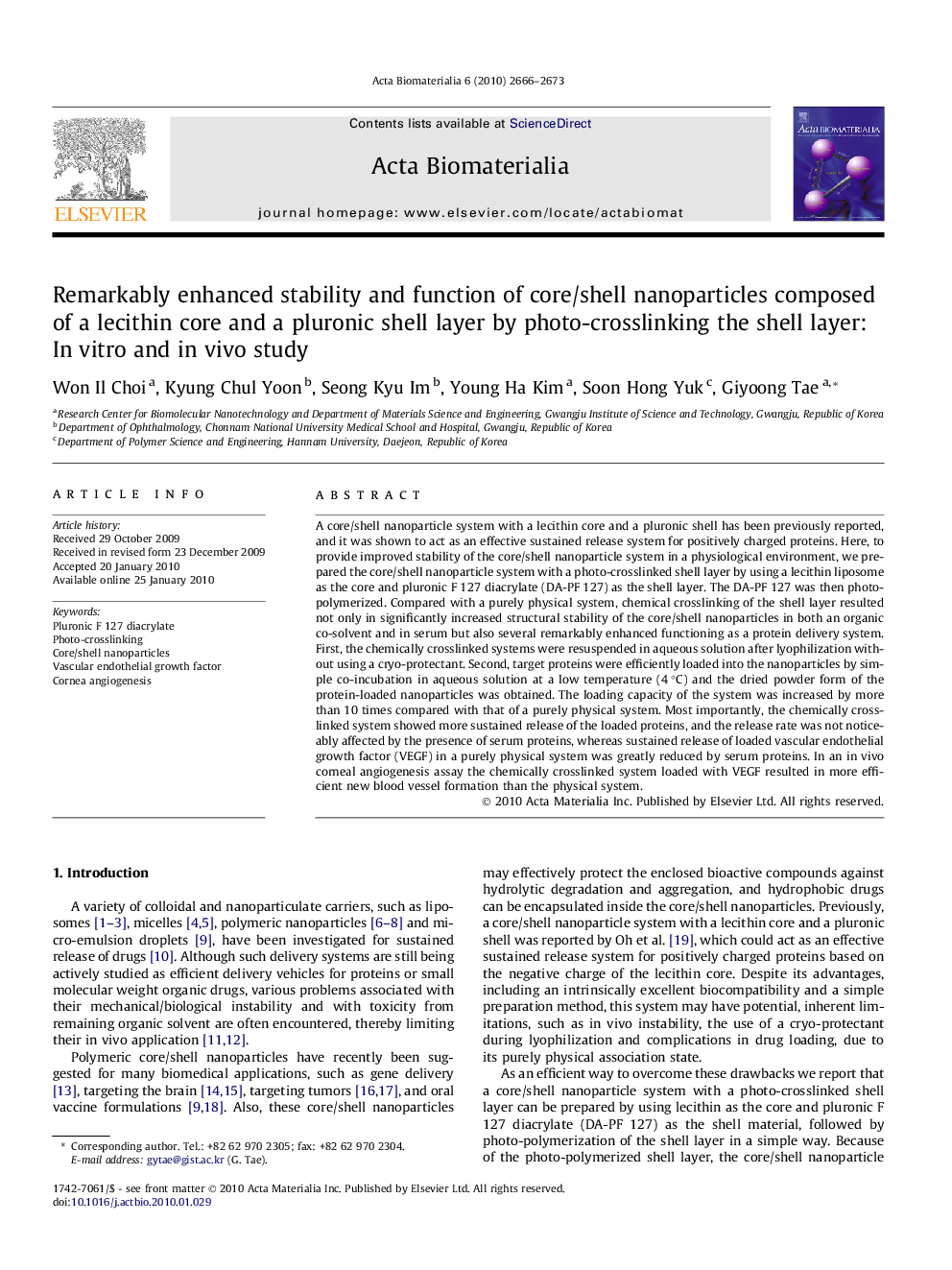| Article ID | Journal | Published Year | Pages | File Type |
|---|---|---|---|---|
| 2444 | Acta Biomaterialia | 2010 | 8 Pages |
A core/shell nanoparticle system with a lecithin core and a pluronic shell has been previously reported, and it was shown to act as an effective sustained release system for positively charged proteins. Here, to provide improved stability of the core/shell nanoparticle system in a physiological environment, we prepared the core/shell nanoparticle system with a photo-crosslinked shell layer by using a lecithin liposome as the core and pluronic F 127 diacrylate (DA-PF 127) as the shell layer. The DA-PF 127 was then photo-polymerized. Compared with a purely physical system, chemical crosslinking of the shell layer resulted not only in significantly increased structural stability of the core/shell nanoparticles in both an organic co-solvent and in serum but also several remarkably enhanced functioning as a protein delivery system. First, the chemically crosslinked systems were resuspended in aqueous solution after lyophilization without using a cryo-protectant. Second, target proteins were efficiently loaded into the nanoparticles by simple co-incubation in aqueous solution at a low temperature (4 °C) and the dried powder form of the protein-loaded nanoparticles was obtained. The loading capacity of the system was increased by more than 10 times compared with that of a purely physical system. Most importantly, the chemically crosslinked system showed more sustained release of the loaded proteins, and the release rate was not noticeably affected by the presence of serum proteins, whereas sustained release of loaded vascular endothelial growth factor (VEGF) in a purely physical system was greatly reduced by serum proteins. In an in vivo corneal angiogenesis assay the chemically crosslinked system loaded with VEGF resulted in more efficient new blood vessel formation than the physical system.
